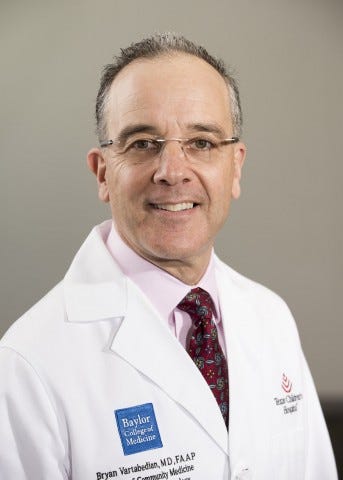
Dr. Vartabedian presented on his social media expertise at AAP’s National Conference.
It used to be that how we looked as doctors was limited to the IRL spaces where health care changes hands: offices and hospitals. That’s still important the way we look in the virtual space is evolving as a new professional responsibility. We all have a digital footprint.
So what’s a digital footprint? It’s what people see and understand about you when they look for you online. It’s the amalgam of writing, comments, ratings, images and video clip that make up the first page of Google when your name is entered.
As a health professional you have to take total charge of your footprint.
It’s how the world sees you. It’s where people start when they want to know about you. Maybe more importantly, it’s how the world understands you. If you think participation is optional, so is relevance.
You control what the world sees or someone else will. The more compelling argument for control of your digital footprint is the reality that either you decide how the world understands you or someone else will. Remember that when your name is searched, the first page of Google will exist either way.
Visibility creates opportunity. Every one of us has a passion or a purpose that drives us. And we want opportunities to fulfill that passion. A solid footprint is a great place to start. When people see you, they will want to talk to you. When you talk to people, things happen. It’s that simple.
So what can you do right now to improve how you look?
1. Think about who you want to reach
Not all footprints are created equal. And for good reason. We’re all looking for different things. The trauma surgeon looking to build a speaking career wants to appeal to a very different set of eyes than an early-career pediatrician looking to build a practice in a competitive metropolitan market. The stuff you create to populate the popular search engines needs to be appealing to those you want to appeal to. So think about who you want to reach and how you want to look when they find you.
2. Conduct a footprint audit
You’ve done this before, but do it again: enter your name in Google with ‘M.D.’ behind it, hit search and see what you find. Look at video, images and things that are written like bios. How to you look and how does it match with the way you want to appear to a searching public?
3. Find a mentor
When building a powerful footprint it’s always helpful to find a virtual mentor. That’s someone in your field or space doing just the thing that you want to do. Look at their profiles and what they create. What do you find when you search for them. Watch them and study what they do.
4. Shape your map
Your entire footprint is built around the content: that’s stuff that people consume. Specifically, written copy, video and images. Remember that while engagement on platforms like Twitter, Snapchat and Facebook are valuable for community and conversation, they are weak when it comes to your footprint. Most of what happens on these applications is part of a timeline or stream that comes and goes. You need to build what I call enduring content: stuff people will find. When you think about where that stuff will live
5. Start with powerful public profiles
The easiest thing for people to find is your public profiles. In fact, when I conduct an audit on myself, 7 of the top 10 search results are public profiles: these are sites and spaces where I park my biography and things about me. Examples are Doximity, LinkedIn, HealthGrades and the page your institution keeps about you. Make sure these are thoroughly built out with a great looking narrative bio that tells your story. Use a professional headshot and be sure to fill out anything and everything that helps you shine in front of searching eyes.
6. Make stuff that people will find
After your profiles the next thing that will define you is what you write or record. For many doctors, the barrier to entry for video or audio recording is a little high. So for most of us, the easiest content to make is written copy. Look for sites to tell and teach what you do. A great place to do that is on your hospital’s blog. Your expertise and their site are a great match up to park your brilliant ideas. Right here on Doximity’s xxx is a great place for editorial content. Again, your virtual mentor becomes important in terms of knowing what to write to appeal to your audience. Watch and study what the experts in your fields with great footprints are doing.

Finally, remember that your footprint is like a garden. It needs attention, time and upkeep in order to look its best.
Dr. Bryan Vartabedian is the Director of Community Medicine for the division of gastroenterology, hepatology and nutrition at Texas Children’s Hospital. Dr Vartabedian is passionate about the translation of medical information for parents. He is a Doximity advisor.







